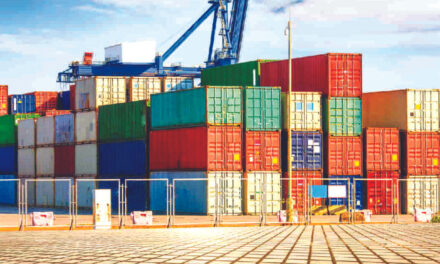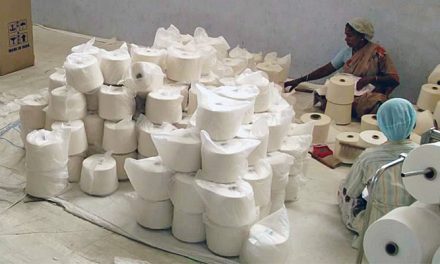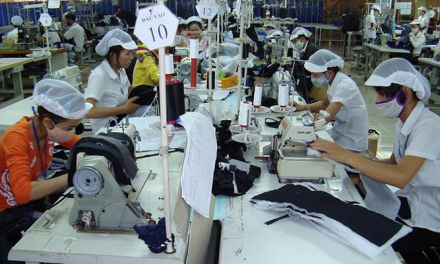The textile industry is considered one of the most chemical intensive industries in the world. Approximately 9.3 mn tonnes of chemicals are used annually for the global production of textile products. Many of these chemicals will end up in the products to achieve the desired colour, effects and functionalities. However, if they are used inappropriately or ineffectively, they would be discharged from the factories, posing global environmental concerns.
The inappropriate use of chemicals is the key issue. This problem boils down to the limited knowledge in upstream chemical management, limited knowledge about input chemicals, ineffective risk identification and lack of proper chemical inventories. A deficiency in traceability coupled with the technical gap in the supply chain prevents the industry from understanding the root cause of the problems and prevents the industry from moving towards environmentally responsible production. The SGS Holistic Solution for managing Zero Discharge addresses the chemical and environmental issues in the supply chain. It provides technical support and feasible solutions to brands, retailers, and other players in the value chain through our three strategic areas of services:
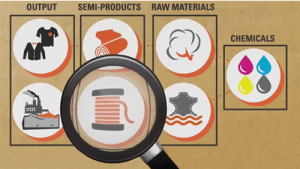
Training & knowledge management
At SGS, we view training as a fundamental way to strengthen the understanding of zero discharge and a way to advance supply chain’s knowledge of chemical management. Training will address the knowledge gaps that industry stakeholders may have. SGS supports the textile industry with the following schemes:
Hazardous substance control (HSC) workshop
Hazardous Substance Control (HSC) is a modular and process specific workshop which is designed with Chemical Flow Management (CFM) methodology in mind. Participants will acquire an appropriate level of knowledge to implement sound chemical management system in their workplace and to enhance traceability and transparency of chemical use. The workshop is designed to be practical and highly interactive and is customised to each stage of the production process (dyeing, printing, washing, and finishing) making it highly relevant to the participants. Also, practical toolkits, which are demonstrated and provided to the participants, will allow them to immediately implement their newly acquired knowledge in risk assessment when they return to their workplace.
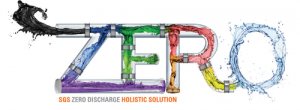
Higg Index Self-Assessment Training
The Higg Index Facilities Environmental Module is driven by the sustainable apparel coalition (SAC) and is a suite of self-assessment tools to measure environmental impacts and to drive continuous improvement.
There are different assessment modules, but they all comprise of questions from the foundational level, which is the basic conformity requirement, the medium level and the aspirational level, which cover the advanced and far-fetching sustainability practices.
The Higg Index self-assessment training aims to train factories to understand how they can utilize the existing self-assessment web tool. Furthermore, it provides an overview on how to use the Higg Index/SAC web-based interface as well as interpret questions that are presented to facilities. (www.apparelcoalition.org/higgindex/)
In addition, the training lets the participants:
- Understand market trends
- Understand the detailed scope of the Higg Index
- Be able to self-assess their conformity with the Higg Index criteria
- Understand the opportunities associated with the implementation of continual improvement
Chemical risk assessment
Chemical screening (SGS BRS400-16)
This chemical screening is an innovative and novel solution for commercially available chemical formulations, which is designed to be practical, applicable and achievable for the industry. Our panel of multi-disciplinary technical experts in the field of textile and leather chemistry researched and assessed the relevancy of the target analytes. As a result, the scope of our screening solution covers a comprehensive list of substances allowing us to evaluate chemicals used in textile and leather products.
SGS BRS400-16 analyte list
- Full list of analytes in Manufacturing Restricted Substance List (MRSL) published in 2016
- Selected list of analytes which are identified based on risk level by considering commonly used RSLs and regulatory requirements on the product level.
Manufacturing restricted substance list (MRSL) testing
As an alternative to chemical screening, SGS offers target quantitative analysis for the full ZDHC MRSL on Group A (Raw Materials) and Group B (Chemical Formulations). This is done using analytical chemistry technology to achieve a lower and achievable detection limit required by the market. It takes a conventional testing approach and provides an absolute figure to the client to help assure a greater level of product safety compliance.
Wastewater testing & benchmarking
SGS has worldwide capability to collect wastewater & sludge samples on-site and to conduct target quantitative testing with reference to the latest version of the ZDHC 2016 Wastewater Guidelines, including:
- Conventional Parameters (i.e. BOD, COD, heavy metals, etc)
- ZDHC MRSL Parameters
Test data can be used to set a baseline for wastewater and sludge discharge for continual improvement and using it for the purpose of dat disclosure.
Higg index verification
SGS is approved by the Sustainable Apparel Coalition as an organisation to conduct the verification of the Higg Index Facilities Environmental Module (Higg FEM). The SGS approach to the Higg FEM verification conforms with the SAC Higg verification protocol. Our large network of Higg qualified verifiers allows SGS to provide verifiers with a very good knowledge of local environmental requirements and to conduct site visits in the local language. This keeps the service affordable. The Higg index verification report is owned by the facilities. This allows them to share their performance with other Brands / Retailers in order to reduce audit redundancy. This robust review offers a high level of trust between supply chain partners and is designed to drive continuous improvement.
Best practice & system implementation
Root cause analysis
Our Root Cause Analysis intends to address technical gaps in chemical management. It is designed to highlight high risk restricted substances that are used in the manufacturing of textile and footwear products. It combines an onsite factory visit and on-site sampling of chemicals and products for testing.
Benefit of root cause analysis
We will assist our customers by:
- Validating chemical input at each production stage with reference to the documents provided by the factory
- Identifying root cause(s) that contribute to the technical gaps
- Proposing an action plan for improved usage of chemicals in the factory
Chemical inventory solution development
The development of a Chemical Inventory List (CIL) helps factories in understanding their chemical input and supports them in increasing system traceability and transparency through tracking key data for chemical management.
SGS helps factories to develop this critical tool by reviewing chemical formulations with the aid of technical datasheets, MSDS and MRSL testing reports to verify if the chemical formulations meet market requirements.
Verification
It is an on-site visit to verify that all chemicals purchased and used are properly logged into the chemical inventory. The verification will identify gaps and shortfalls within the chemical inventory and chemical procurement system implemented by the factory, Thus, facilitates the manufacturer to initiate improvement actions.
bluefinderTM
bluesign® bluefinderTM is a web-based, advanced search engine that contains a positive list of chemical products (with bluesign blue & grey rating). bluesign® bluefinderTM is designed for responsible chemical sourcing to support manufacturers to meet bluesign® criteria.
blueXpertTM
It is a web-based calculator that reports process data and impacts as well as resource and cost savings. Calculations are based on an established algorithm and EHS data based on the bluesign blue tool using a company’s own data. It also benchmarks with best practice processes from the bluesign® system partner chemical suppliers. It benefits the suppliers by having resource and cost saving information prior to production.




